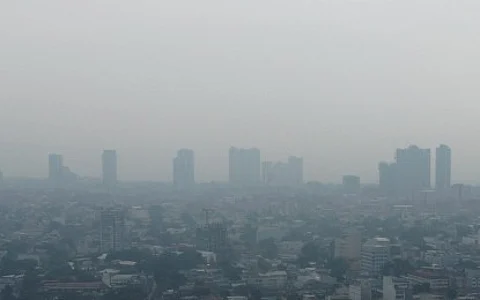
- NEWS
- the EDIT
- COMMENTARY
- BUSINESS
- LIFE
- SHOW
- ACTION
- GLOBAL GOALS
- SNAPS
- DYARYO TIRADA
- MORE

Environmental advocates are warning that more than 13 million residents of Metro Manila are regularly exposed to pollution levels that exceed global safety standards, leading to a rise in respiratory, cardiovascular and neurological diseases.
According to a report from the Ateneo School of Medicine and Public Health, poor air quality was the leading environmental threat to human health in 2021, accounting for 8.1 million deaths worldwide.
The report said fine particulate matter, known as PM2.5, can bypass the body’s natural defenses and enter the bloodstream and brain, causing illnesses such as asthma, heart disease, stroke and cancer.
To combat this, a new coalition called Breathe Metro Manila is advocating for stronger air quality monitoring and data-driven solutions.
“Air pollution is the leading cause of disease and early death worldwide, even more than high blood pressure or smoking, and yet, we don’t have enough publicly available data to protect the populations most at risk,” said Dr. Annelle Chua of the Ateneo School of Medicine and Public Health.
The coalition, which includes technology and academic institutions, aims to expand real-time air quality monitoring and make the data accessible to the public and policymakers.
Dr. James Bernard Simpas of the Manila Observatory emphasized the importance of data, stating, “You cannot manage what you cannot measure. Long-term measurements illustrate the effectiveness of (air quality)-relevant policy decisions. Understanding the major sources of air pollution helps direct air pollution mitigation and control strategies.”
Quezon City has already begun using this data to inform policy and Mayor Joy Belmonte recently updated the city’s class suspension protocols to include real-time air quality as a factor. Classes are now automatically canceled when pollution levels reach “Very Unhealthy” or “Emergency,” based on data from 40 monitoring sites.
The coalition is calling on local governments, private sector leaders, schools and civic organizations to support their efforts. By using real-time data and fostering collaboration, they hope to turn air quality insights into policies that have a long-term impact on public health.
